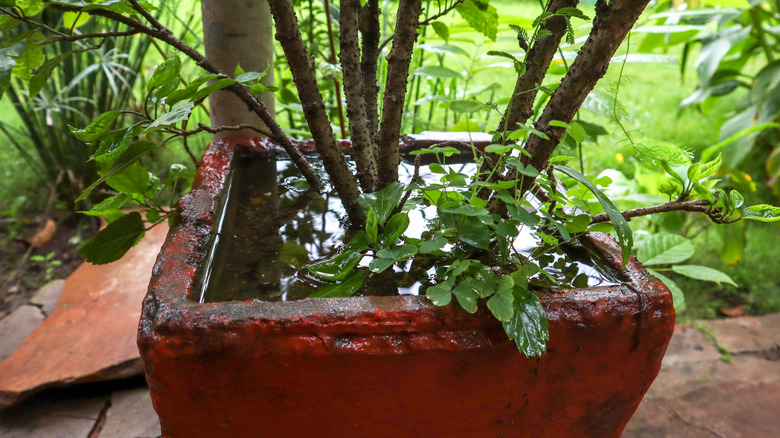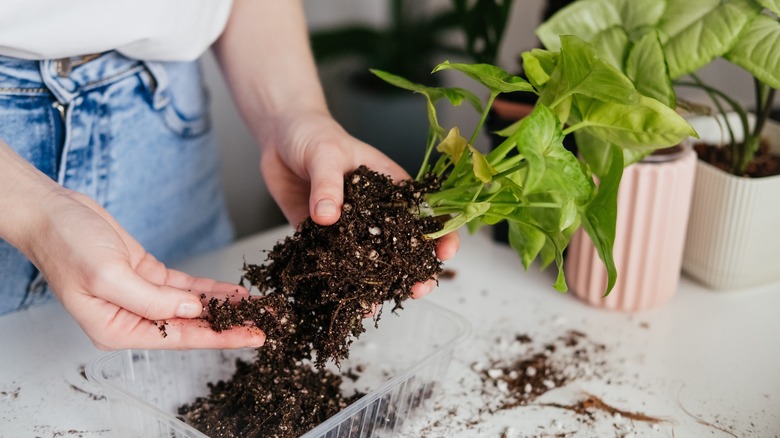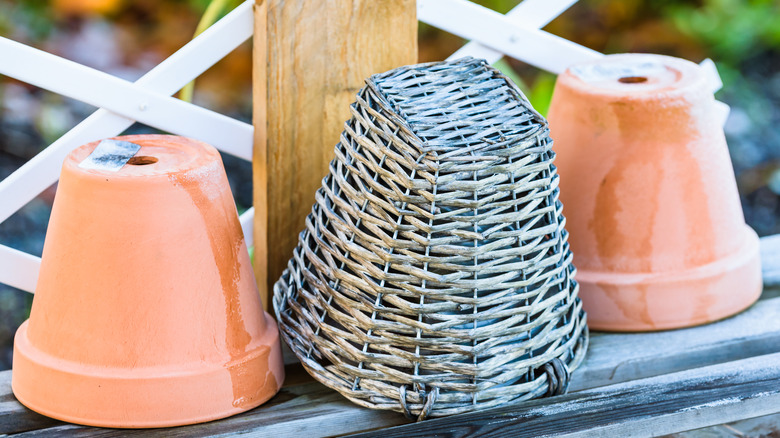What To Do When Your Outdoor Planters Get Waterlogged
Are your outdoor potted plants turning yellow at the leaves, wilting, losing their bark, or shedding new shoots? If their soil seems to be constantly wet, these symptoms likely mean that your planter is waterlogged. Waterlogging means that water does not drain the soil property, either because you're overwatering, too much rainwater is getting in, or the planters don't give water an easy way out. When plants are allowed to sit in waterlogged soil, their roots lose the ability to extract oxygen and begin to die. This, in turn, allows fungal spores to spread through the root system and causes what we know as root rot. If you suspect that waterlogging is affecting your plants, you need to act quickly to save them and prevent this scenario from unfolding in the future.
First things first, you need to rescue plants that are sick because of the excess water. Any plants that are showing symptoms of distress should undergo root rot inspection and treatment right away. If any parts of the root are already rotting, you have to remove them properly. But your job doesn't end there — before you repot the plant, you'll have to ensure that the pot and planting medium are designed to drain properly. Likewise, you'll have to be certain that the plant's location outdoors doesn't contribute to waterlogging. Luckily, when you take these steps, you should be able to get your waterlogged plants back to peak health.
How to rescue a waterlogged plant
Start by taking the affected plants out of their planters and examining their roots. You'll have to make some difficult decisions at this stage. If the entire root system, from the crown to the tips, looks soft, gooey, and brown-black, and gives off an acidic smell, the plant is circling the drain and your intervention won't save it. On the other hand, if parts of the system are showing signs of demise while some roots look healthy, carry on with the plant rescue. You'll distinguish the healthy roots by their firmness and lighter color — these signs bode well for your waterlogged plant.
Before you remove the rotting roots, you'll have to clean the system thoroughly. Start by picking off the soil. Do this gently so you don't accidentally damage what's left of the healthy roots. Next, rinse the roots with water until no remnants of the soil are left. Then, use a pair of sterilized pruners to cut off the rotting roots, and discard the latter. With the dead roots removed, don't try sticking the poor plant back into the original substrate, even if it has dried. The original soil is likely host to fungal pathogens that could quickly overwhelm the recovering plant. Either discard it in the landfill bin or sterilize the contaminated soil properly before reuse. As for the plant, repot it using a new soil mix — but only after you're certain that the planter will not get waterlogged again.
How to ensure good drainage in your outdoor planters
If you're not overwatering the plants, the waterlogging issue likely stems from two causes — the planter's location or its inability to drain. If the planter sits in a spot where rainwater can get into it in excess — like beneath a gutter that overflows during heavy rainfall — there's your culprit. Place the rescued, repotted plants in a new location that doesn't get drenched (and clean your gutters to prevent overflow).
If the planter's location has nothing to do with the waterlogging, the next step on your checklist is to inspect the planters. If they don't have drainage holes (or too few of them), this could be the cause of waterlogging. You can easily add drainage holes to your pots to resolve the issue. Otherwise, consider using materials to prop up the substrate in the planter — doing so allows gravity to pull excess water out of the soil and away from the plant's roots. Wood mulch and gravel can be a good choice for smaller planters — simply place these at the bottom of the pot before adding soil. In larger planters, you can use empty, air-filled water bottles to fill the bottom — this layer will support large volumes of soil and leave room for water to drain down. With these drainage strategies in place, your rescued plant should have a second lease on life.


